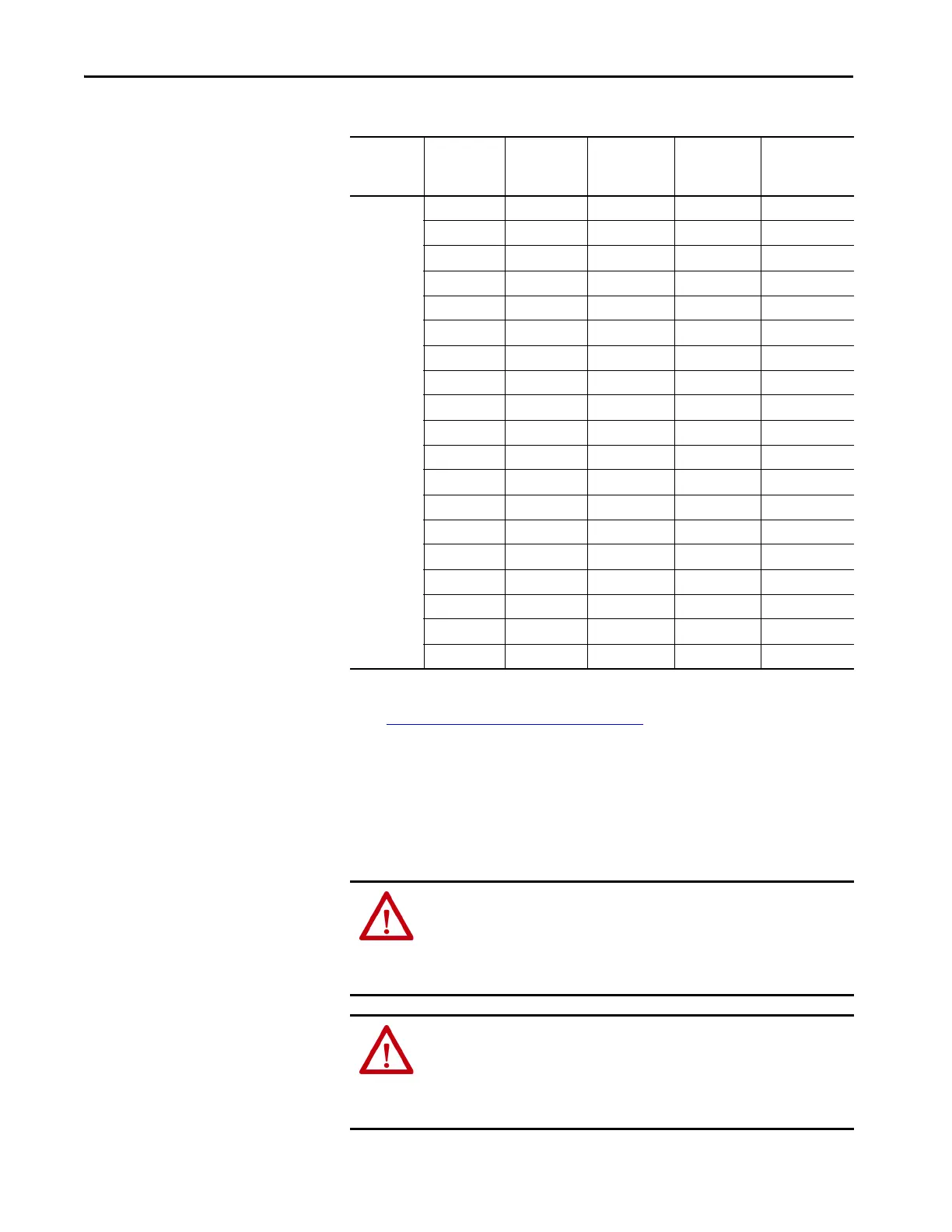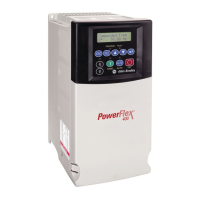22 Rockwell Automation Publication 22C-UM001J-EN-E - January 2017
Chapter 1 Installation/Wiring
Power Wiring
380-480V AC
–
3-Phase
2.2 (3.0) 10 140M-D8E-C10 100-C09 5098
4.0 (5.0) 20 140M-D8E-C16 100-C16 5098
5.5 (7.5) 20 140M-D8E-C16 100-C23 5098
7.5 (10) 25 140M-D8E-C20 100-C23 5098
11 (15) 30 140M-F8E-C32 100-C30 5098
15 (20) 40 140M-F8E-C32 100-C37 5098
18.5 (25) 50 140M-F8E-C45 100-C60 9086
22 (30) 60 — 100-C60 —
30 (40) 80 — 100-C85 —
37 (50) 100 — 100-C85 —
45 (60) 125 — 100-D110 —
55 (75) 150 — 100-D140 —
75 (100) 200 — 100-D180 —
90 (125) 250 — 100-D210 —
110 (150) 250 — 100-D250 —
132 (200) 300 — 100-D300 —
160 (250) 400 — 100-D420 —
200 (300) 500 — 100-D420 —
250 (350) 600 — 100-D630 —
(1) Recommended Fuse Class: UL Class J, CC, T or Type BS88; 600V (550V) or equivalent.
(2) The AIC ratings of the Bulletin 140M Motor Protector Circuit Breakers may vary.
See Bulletin 140M Motor Protection Circuit Breakers Application Ratings.
(3) Manual Self-Protected (Type E) Combination Motor Controller, UL listed for 208 Wye or Delta, 240 Wye or Delta, 480Y/277 or
600Y/347. Not UL listed for use on 480V or 600V Delta/Delta, corner ground, or high-resistance ground systems.
(4) When using a Manual Self-Protected (Type E) Combination Motor Controller, the drive must be installed in a ventilated or non-
ventilated enclosure with the minimum volume specified in this column. Application specific thermal considerations may
require a larger enclosure.
Table 2 - Recommended Branch Circuit Protective Devices
Voltage
Rating
Drive Rating
kW (HP)
Fuse Rating
(1)
Amps
140M Motor
Protectors
(2)(3)
Catalog No.
Recommended
MCS Contactors
Catalog No.
Min. Enclosure
Volume
(4)
Inches
3
ATTENTION: National Codes and standards (NEC, VDE, BSI, etc.) and local
codes outline provisions for safely installing electrical equipment.
Installation must comply with specifications regarding wire types, conductor
sizes, branch circuit protection and disconnect devices. Failure to do so may
result in personal injury and/or equipment damage.
ATTENTION: To avoid a possible shock hazard caused by induced voltages,
unused wires in the conduit must be grounded at both ends. For the same
reason, if a drive sharing a conduit is being serviced or installed, all drives
using this conduit should be disabled. This will help minimize the possible
shock hazard from “cross coupled” power leads.

